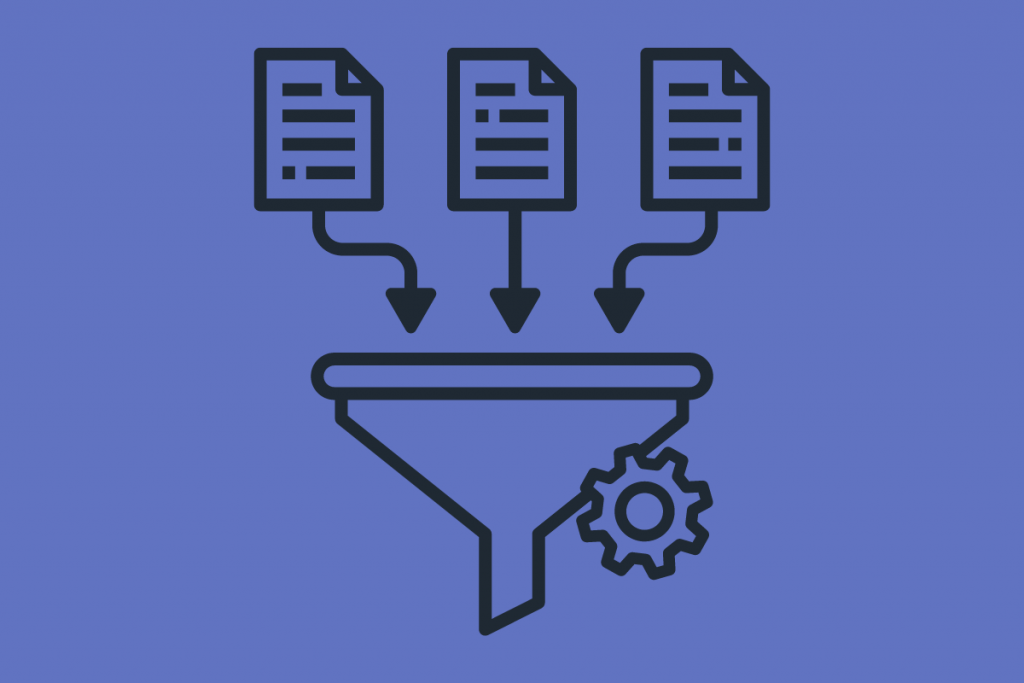A Comprehensive Guide to SaaS SEO: Dominate Organic Search
99% of B2B decision makers start their research online before buying a product, making SEO essential for SaaS companies.
In this guide, you’ll learn how to create an effective SEO strategy for your SaaS in seven practical steps. If you want to outrank your competitors and drive qualified leads for your B2B SaaS business—this one’s for you.
Let’s start with the basics and work our way down.
What Makes SaaS SEO Different?
SaaS SEO focuses on improving a SaaS company’s website or web page’s ranking in the search engines’ organic search results.
The goal is the same as with traditional SEO practices—attracting organic traffic that will turn leads and customers. However, the approach is different due to the unique nature of SaaS products and their sales cycles:
- Educating prospects: SaaS brands rely heavily on online visibility to attract potential customers. Since their products are not physically tangible, potential users need clear, compelling information to understand how the software works and how it can benefit them. SEO for SaaS companies focuses on creating content that boosts search engine rankings and educates visitors about the software’s features and advantages.
- Persuading decision-makers: The decision-making process for SaaS products often involves more research and consideration. Potential customers need to understand how the software solves their problems, integrates with existing systems, and provides ongoing value. This includes creating detailed product descriptions, user guides, case studies, and testimonials that showcase the software’s effectiveness and benefits.
- Retaining customers: SaaS SEO strategies emphasize continuous engagement and nurturing of leads throughout the sales funnel. Since SaaS products often operate on a subscription basis, customer retention is as important as acquisition. SEO efforts extend beyond attracting initial visitors to also include strategies for keeping existing customers engaged and satisfied. This may involve ongoing updates, newsletters, and customer support content that improves user experience and encourages long-term loyalty.
To sum it up, SEO for the SaaS industry is different because it focuses not only on improving search engine rankings but also on educating potential customers, supporting them through a more complex decision-making process, and building ongoing relationships to drive sustained growth and success.
Why SEO is Important For SaaS Businesses
An effective SEO strategy ensures that your SaaS website ranks higher in the search engine result pages (SERPs), making it more likely for interested users to discover your software.
This increased visibility not only drives more traffic to your site but also attracts qualified leads who are already interested in what you offer.
Having a strong SEO presence builds trust and credibility. When your SaaS website consistently appears among the top results, it signals to potential customers that your business is reputable and authoritative in its field. This trust is crucial in converting visitors into paying customers.
SaaS SEO provides a competitive advantage in a crowded marketplace. By optimizing your content with relevant keywords and creating valuable, informative resources, you can differentiate your SaaS offering from competitors and demonstrate why it’s the best choice for potential customers.
Investing in SEO yields long-term benefits for SaaS businesses. Unlike paid advertising, which stops generating traffic once you stop paying, SEO efforts can continue to attract organic traffic over time. This makes it a cost-effective strategy for sustainable growth and customer acquisition.
SEO Helps SaaS Companies:
- Attract qualified leads.
- Increase brand awareness.
- Build industry authority.
- Reduce marketing costs.
How to Create a SaaS SEO Strategy: Outranking Competitors
- Define SEO goals and KPIs.
- Apply technical SEO.
- Do a customer-centric keyword analysis.
- Create SEO-optimized content.
- Optimize internal linking.
- Build (earn) backlinks.
- Follow up on your SEO efforts.
1. Define Your SaaS SEO Goals and KPIs
When SaaS companies set SEO goals and KPIs, they need to think differently compared to other businesses:
Focus on subscription metrics
SaaS companies often operate on a subscription model, where customer retention and lifetime value are crucial. Therefore, SEO goals should focus not only on acquiring new visitors but also on converting them into paying customers and retaining them over time.
Emphasize product adoption
Unlike traditional businesses that may sell products once, SaaS companies aim for ongoing product adoption. SEO goals should consider metrics like free trial sign-ups, feature usage, and customer engagement with the software.
Churn reduction
Since SaaS relies on recurring revenue, reducing churn (the rate at which customers stop subscribing) is critical. SEO goals can include improving customer retention metrics through targeted content and user-focused optimizations.
Trial conversion rates
Many SaaS companies offer free trials or freemium models. SEO goals should track how organic traffic converts into trial users and ultimately paying customers. This involves optimizing landing pages, calls-to-action, and user journeys to encourage conversions.
Measuring impact on revenue
Ultimately, SaaS SEO goals should tie back to revenue impact. This may involve tracking metrics like customer acquisition cost (CAC), customer lifetime value (CLV), and ROI from organic search efforts. Understanding how SEO contributes to revenue growth helps prioritize efforts and justify investments in SEO strategies.
SaaS companies should tailor their SEO goals and KPIs to reflect the unique aspects of their business model, focusing on sustainable growth, customer retention, and revenue impact. By aligning SEO efforts with these specific goals, SaaS companies can optimize their digital presence effectively and drive long-term success in the competitive marketplace.
2. Apply Technical SEO
Your SEO content will mean next to nothing if you don’t address the technical SEO aspects.
Technical SEO involves optimizing a website’s infrastructure and settings to improve its crawling, indexing, and overall performance, including aspects like site speed, mobile-friendliness, and security protocols like HTTPS.
When it comes to technical SEO, there are basic practices that every company should apply to improve their website’s performance:
Optimize page speed: Make sure that your website loads quickly on both desktop and mobile devices. Faster loading times improve user experience and can positively impact your search engine rankings.
Mobile friendliness: Make sure your website is responsive and displays properly on mobile devices. With more users accessing websites via smartphones and tablets, Google prioritizes mobile-friendly sites in its search results.
Secure website with HTTPS: Implement HTTPS encryption to secure user data transmitted between the website and users. Websites with HTTPS have a small ranking boost in Google search results and build trust with visitors.
Optimize meta tags: Use relevant keywords in your title tags and meta descriptions. These tags appear in search engine results and help users understand what each page is about, encouraging them to click through to your website.
Optimize images: Use descriptive filenames and alt attributes for images to help search engines understand the content of your images. Optimized images can also appear in image search results, driving additional traffic to your website.
Fix crawl errors: Regularly check for crawl errors using SEO tools like Google Search Console. Fixing crawl errors ensures that search engines can access and index your website’s content without issues.
By implementing these basic technical SEO practices, you can improve your website’s visibility in the SERPs and overall user experience.
3. Customer-Centric Keyword Research
Before you get started with your keyword research, you need to have a good understanding of your ideal customer profile (ICP). So, if you haven’t done a target audience analysis, now’s the time.
You can divide your keyword analysis into two categories: keywords for your web pages and keywords for your blog content.
Focus on ICP pain points
A common mistake businesses make with keyword research is prioritizing search volume over what’s actually relevant for the customer—we’re not going to do that.
Having a customer-centric approach is vital when picking keywords for the blog. When it comes to your home and service pages, however, the keywords can be more product-oriented.
For the blog content, you want to go with keywords that address your ICP’s specific needs and challenges. This ensures that your content will not only be visible in the SERPs but also resonate with your target audience.
Competitor analysis
Performing a competitive analysis can provide valuable insights into keyword opportunities and content gaps. By examining what keywords your competitors are targeting and where there may be underused or overlooked areas, you can refine your own strategy to capture more organic traffic.
Marketing funnel
Aligning your keyword strategy with the SaaS marketing funnel is critical. Begin with keywords that raise awareness about the problems your SaaS solution solves. These might include phrases related to common challenges, or pain points your target audience faces.
Next, focus on keywords that cater to the consideration stage, where potential customers are evaluating different solutions. These keywords could include comparisons between different SaaS products or features that your solution offers.
Finally, target keywords that support the decision-making stage, where potential customers are ready to choose a specific product. These keywords should emphasize your unique value proposition, features, benefits, and why your SaaS solution is the best choice.
Great tools for keyword research:
4. Implement SEO in Your SaaS Content Marketing Strategy
The next step is to create the SEO content for the website and the blog and make it a part of your content marketing strategy. You need to apply the basic SEO best practices:
- Use the main keyword in headlines, meta description, URL, and meta title.
- Incorporate primary and related keywords throughout the content.
- Use clear and grammatically correct language.
However, it’s not enough to optimize your content with the right keywords—you also need to create content that’s better than your competitors. Content that’s engaging, helpful, and genuinely interesting for your target audience:
Unique insights
Define a unique angle or perspective that sets your content apart. Provide insights, solutions, or data that competitors may not cover or haven’t explored deeply.
Visual and interactive elements
Incorporate visually appealing elements like infographics, videos, or interactive tools to improve engagement and make complex concepts more accessible.
Address real pain points
Understand your audience’s pain points and challenges. Create content that addresses these issues directly and provides actionable solutions or insights that competitors may overlook.
Engage with audience feedback
Actively engage with your audience through comments, social media interactions, and customer feedback. Use this input to refine your content strategy and address evolving needs.
Expert advice
Collaborate with industry experts or influencers to contribute their insights or perspectives. Expert contributions can add credibility, depth, and authority to your content, helping it stand out in a crowded field.
Original studies and reports
Conduct and publish your own studies, surveys, or research reports related to your industry or niche. Presenting unique data and insights can establish your brand as a thought leader and attract attention from both customers and industry peers.
5. Optimize Internal Linking
Having a strategic internal linking strategy is one of the keys to SEO success. Internal linking means linking pages within your own website—a practice that improves SEO as well as user experience. Here’s how you can effectively optimize internal linking:
- Create a site structure: Start by organizing your website into categories and subcategories that logically group related content. This hierarchical structure helps both users and search engines navigate your site more easily. You want to avoid “orphan pages” that don’t have any links to them.
- Use anchor text: Anchor text is the clickable text in a hyperlink. Use descriptive and relevant anchor text that includes keywords related to the linked page. Avoid generic terms like “click here” or “read more.”
- Prioritize relevance: Link related pages together to create a natural flow of information. Ensure that the linked pages provide additional context or value to the reader on the topic they are interested in.
- Avoid over-optimization: While internal linking is beneficial, avoid overdoing it with excessive links on a single page or using too many exact-match anchor texts. Focus on user experience and providing value rather than manipulating search rankings.
- Audit and update regularly: Conduct regular audits of your internal links to identify broken links or opportunities for improvement. Update older content with new links to relevant and updated pages on your site.
- Consider user intent: Align your internal linking strategy with user intent. Anticipate what users are looking for when they visit a particular page and guide them to related content that matches their interests or needs.
When it comes to blog content, it’s beneficial to create content clusters— you can learn all about it in the SaaS content marketing guide.
6. Build Backlinks and Domain Authority
Pages with more backlinks tend to rank higher. The top result on Google typically has an average of 3.8 times more backlinks than positions #2 through #10.
High-quality backlinks signal to search engines that your content is trustworthy and relevant, which boosts your rankings in the SERPs. Additionally, when authoritative sites link to you, their audience may click on those links and visit your site, which increases your traffic. Being linked by respected websites also improves your credibility and reputation in the industry.
However, many companies opt for buying links instead of earning them, and it isn’t always the best idea. Purchased links are often from low-quality or irrelevant sites, which do not help your SEO and may even harm it. Search engines like Google can penalize websites that engage in buying links, which can drastically lower your search rankings.
Users and search engines trust natural, earned links more than paid ones. Earning links through valuable content builds genuine trust and authority. So, it’s essential to focus on earning high-quality backlinks rather than buying them.
Here’s how SaaS companies can earn high-quality backlinks:
- Produce content that people want to link to. This could be thought-provoking blog posts, guides with unique insights into a problem, or just genuinely good infographics.
- Write articles for reputable websites in your industry—guest blogging. In return, you can often include a link back to your own site.
- Share your content on social media platforms to increase its reach. When people find your content useful, they are more likely to link to it.
- Get featured in industry publications. Submit your insights or data to industry publications and journals. When they reference your work, they’ll link back to your site.
- Conduct surveys or studies and publish the results. Original data is often cited by other websites, earning you backlinks.
7. Follow Up and Improve your SaaS SEO Efforts
The very first step of creating an SEO strategy is to set goals and KPIs—if you haven’t done that yet, go ahead.
This last step is all about following up on your goals. For long-term success, you need to consistently analyze, optimize, and monitor your SEO efforts through:
SEO audits: Schedule regular audits to identify and fix any new issues. This keeps your site running smoothly and ensures search engines can easily crawl and index your pages.
Performance reports: Generate regular reports to see how your SEO efforts are performing. Tools like Google Analytics and Google Search Console can be used to track changes and spot trends.
Content updates: Continuously update your content to keep it fresh and relevant. Adding new information or expanding on existing topics can improve your rankings and drive more leads.
KPI tracking: Regularly check your key performance indicators (KPIs) to see if you’re meeting your goals. Use the data to adjust your strategies as needed.
Competitor benchmarking: Compare your SEO performance with your competitors. This will help you identify areas for improvement and stay ahead in the market.
By systematically addressing these areas, companies can improve their SEO efforts, outrank competitors, and generate the right leads.
The Key Takeaways on Mastering SEO for SaaS
SEO plays a vital role in attracting potential customers for your B2B SaaS business.
Key strategies include researching and using customer-centric keywords that really resonates with your audience’s pain points, creating better content than your competitors, optimize internal linking and focusing on earning those high-quality backlinks.
By implementing the practices from this guide, you can increase organic traffic to your SaaS website, improve brand awareness, and get more customers.
Effective SaaS SEO isn’t just about ranking higher in search results—it’s about connecting with your audience and standing out in a competitive market.
Do you need SEO content for your SaaS blog? Message me and I’ll solve it for you.








